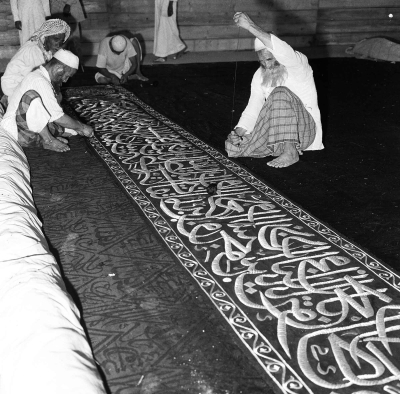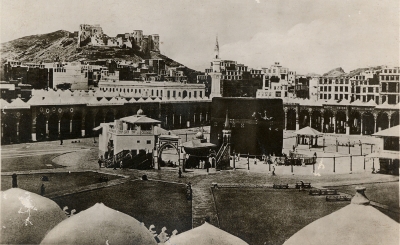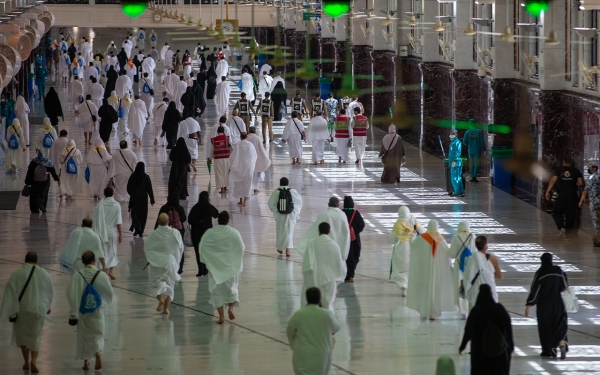
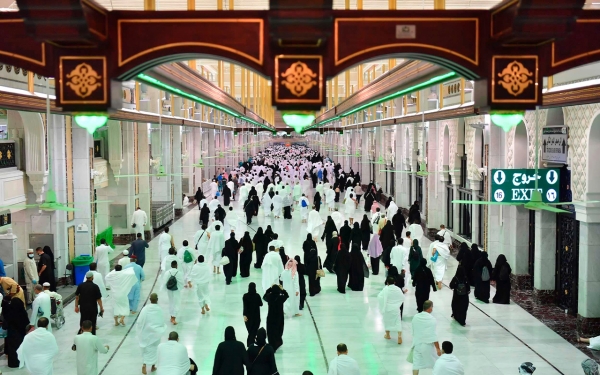
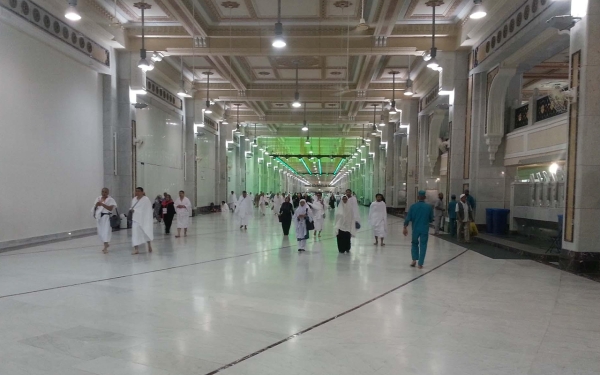
Safa and Marwa are two small hills located on the eastern side of the Grand Mosque. Hajj and Umrah pilgrims walk back and forth between them seven times. This act of walking, known as Saee, is one of the integral rites of both Hajj and Umrah, which are both considered incomplete without. Safa marks the starting point of the Saee, while Marwa marks its conclusion in the seventh cycle.
Design of Safa and Marwa
The designated path for the movement of Hajj and Umrah pilgrims between Safa and Marwa is called Mas'aa. It consists of four floors and has a width of up to forty m, covering a total area of over 87,000 m². Flexibility and security were both taken into consideration when designing Mas'aa. Consequently, multiple floors and various exits were built, in addition to paths and corridors for the elderly and people of determination in the middle of Mas'aa, along with assembly areas near the areas surrounding Safa and Marwa.
History of Saee between Safa and Marwa
The Saee between Safa and Marwa dates back to Hajar, the wife of the Prophet Ibrahim peace be upon him (PBUH), when he left her with their son, Ismail, between the mountains of Safa and Marwa in a place with no vegetation or water. She asked him: Has Allah commanded you to do this? He replied: Yes. She said: Then Allah will not cause us to be lost. As she was searching for a way to save her son from thirst while walking between the mountains, the water of Zamzam gushed forth near al-Kaaba al-Musharrafah.
Safa, the top of Abu Qubays Mountain, is an elevated area adjacent to the gate of the Grand Mosque. Saee commences at Safa, at the base of Abu Qubays Mountain located south of the Grand Mosque, near its gate known as the Safa Gate. Marwa, mentioned along with Safa, is a small hill near the Kaaba. The Saee concludes at Marwa in the seventh cycle.
The area delineated by green indicator lights is the deepest depression within Mas'aa, situated at the valley's lowest point nestled between the two hills. The residence of al-Abbas Bin Abd al-Muttalib is located in this same area, near an endowment for those neighboring the Holy Mosque.
The Mas'aa in the Grand Mosque was first architecturally integrated in 1956. The existing facilities in the Ajyad and Mas'aa areas, as well as the houses and shops, were removed to construct the new Mas'aa.
Mas'aa between the hills of Safa and Marwa was a busy market where grains, meat, dates, ghee, and fruits were sold. Saee performers between the two hills used to stumble upon crowds of shoppers and climb the Safa and Marwa using stairs to see al-Kaaba al-Musharrafah. The residence of al-Abbas Bin Abd al-Muttalib was situated between them in a neighborhood populated by the nearby residents of that era. During the reign of Caliph Abu Ja'afar al-Mansur, twelve steps had to be climbed to reach Safa and fifteen steps to reach Marwa.
The development of the Mas'aa during the Saudi Era
The first development process for the Mas'aa began in the reign of the Founding King Abdulaziz Bin Abdulrahman Al Saud. He ordered the paving and tiling of the Mas'aa with square stones, a task completed in 1926. This was done to protect the Hajj and Umrah pilgrims from dust. It marked the first time the Mas'aa was paved with stones. Additionally, the surrounding doors of the Mas'aa were repainted and renovated, and the ceiling was renewed to shield visitors of the Grand Mosque from the sun.
King Abdulaziz also commanded the complete shading of the Mas'aa and the installation of canopies along its length from Safa to Marwa in 1947. Thick brass inscriptions were affixed to these canopies, mounted on a thick sheet of iron measuring four m in length and 1.40 m in width. The inscriptions read: "This canopy was established during the reign of His Majesty, the Pride of the Arabs and Muslims, the Custodian of the Two Holy Mosques, the Honorable King Abdulaziz Bin Abdulrahman Bin Faisal Al Saud, King of the Kingdom of Saudi Arabia, in the year 1947. May Allah reward him and grant him success." This canopy was removed before the commencement of the expansion in 1956, and it was reinstalled on Madai Street in al-Judairiyah until 2001, after which it was permanently removed.
During the reign of King Saud Bin Abdulaziz Al Saud, the construction of the first and second floors of the Mas'aa began. In the era of King Fahd Bin Abdulaziz Al Saud, the Safa area on the first floor was expanded. This involved the demolition and removal of some buildings around the Marwa area. The total area increased to 375 m², an addition of approximately 130 m from the previous area. New doors were added on the ground and first floors for entry and exit on the Marwa side.
In the reign of King Abdullah Bin Abdulaziz Al Saud, the width of the Mas'aa doubled by utilizing adjacent areas of the mosque, an additional 43,000 m² before the expansion. The total built-up area for all floors in the Mas'aa and service areas reached 125,000 m².
Related quizzes

